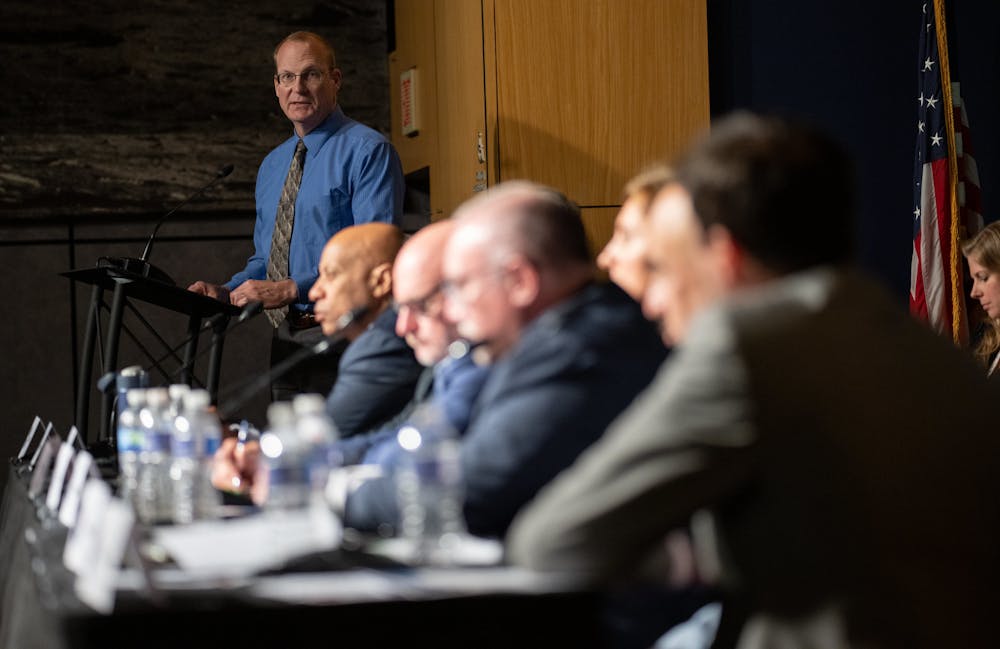Although we are only three weeks into the semester, science has continued to progress as usual. Read on for details about machine learning in medicine, using ecstasy (MDMA) to treat post-traumatic stress disorder (PTSD), scientific fraud and NASA’s new approach to Unidentified Anomalous Phenomena (UAP).
Scientists develop machine learning model to diagnose retinal diseases
A team of scientists based at the U.K.'s National Institute for Health and Care Research and the Biomedical Research Centre at Moorfields Eye Hospital NHS Foundation Trust has developed a new machine learning model that reads retinal images.
Unlike previous models which require large datasets of labeled images, RETFound uses a two-step self-supervised learning algorithm that requires labels for only a small image set. In the first step, the algorithm learns the general structure of the retina by practicing filling in removed sections of images from a 1.6 million item dataset. In the second step, it uses a small set of around 100 images labeled with a target condition to map the differences observed in the condition to the structure it has previously learned.
This new algorithm shows that alternatives to models requiring human-intensive labeling can work in the medical field. The researchers are now interested in generalizing these methods to more medical imaging tasks.
MDMA takes steps towards clinical approval for PTSD treatment
Although MDMA showed promise for treating PTSD in a 2021 study, the Schedule I drug has faced significant obstacles to FDA approval, including the requirement of two placebo-controlled studies. A study published in Nature on Thursday, Sept. 14 has cleared this hurdle by showing that a combination of MDMA and therapy alleviated PTSD-qualifying symptoms in 67% of patients as opposed to 32% in the group that received therapy and a placebo medication.
Although detractors argue that it is impossible to have a true placebo-controlled study for MDMA — seeing as the differences between the real and placebo pills being are noticeable — proponents of MDMA therapy tout these recent results as a sign that MDMA really works. At the same time, many researchers urge caution: MDMA is still poorly understood and a hasty rollout could jeopardize future research efforts.
Italian health minister accused of research misconduct
An article published in the Italian newspaper Il Manifesto alleges that Orazio Schillaci, Italy's minister of health, published eight papers with duplicated images between 2018 and 2022. The papers in question, all in the field of cancer research, reuse rescaled images that are presented as different types of tissues, cancers or cells from different patients.
Though the eight papers in question are a small fraction of Schillaci's more than 513 publications, the allegations, which Schillaci denies, have troubled experts both in and beyond Italy. Even if he or his collaborators didn’t intentionally reuse images, the repetition could still indicate careless data-handling practices.
This is also not the first time a prominent academic has been accused of research misconduct in recent months, with Harvard Business School Professor Francesca Gino being accused of falsifying data in studies in June and former Stanford President Marc Tessier-Lavigne resigning amid accusations of flawed research practices this July.
NASA announces UAP research director
A few weeks after Retired Major David Grusch told Congress about his experiences with UAPs and days after Mexico’s Congress of the Union heard testimony about supposed extraterrestrial life forms including "alien bodies," NASA formally entered the UAP field in a Sept. 14 document titled "Unidentified Anomalous Phenomena Independent Study Team Report."
In addition to detailing the current state of UAPs and prior discussions, the document revealed that NASA appointed a director of UAP research to “centralize communications and leverage NASA’s extensive resources and expertise to actively engage in the whole-of-government UAP initiative.” Out of concerns about harassment and threats, however, the director’s name has not been released.
Although it is well known that NASA searches for extraterrestrial life — through their Mars exploration and telescope programs — the new position might have a more mundane task: finding human causes for UAPs. Assistant Deputy Associate Administrator for Research within NASA‘s Science Mission Directorate Daniel Evans explained, “One of the main goals of what we’re trying to do here today is to move conjecture and conspiracy towards science and sanity.”

















